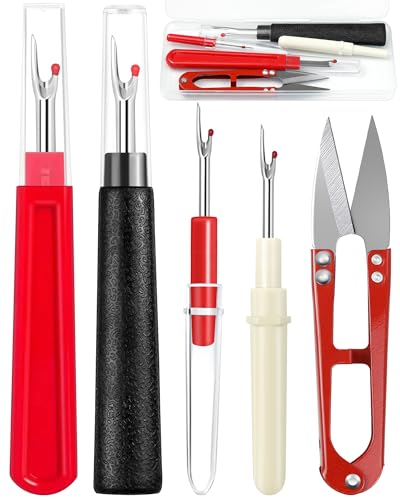Making pattern cutting errors can be frustrating, but don’t worry—you’re not alone. Whether you’re a seasoned tailor or just starting out, mistakes happen. The key is knowing how to fix them effectively.
Imagine spending hours perfecting a design only to realize a critical measurement is off. It can feel discouraging, but correcting these errors is simpler than you might think. With the right techniques, you can turn setbacks into opportunities to improve your skills and create flawless garments.
In this guide, you’ll discover practical tips and strategies to identify and rectify common pattern cutting mistakes. By mastering these corrections, you’ll boost your confidence and ensure your projects turn out beautifully every time.
Common Pattern Cutting Errors
Pattern cutting involves precision; mistakes in aligning pattern pieces and measuring occur frequently.
Misalignment of Pattern Pieces
Misalignment of pattern pieces disrupts garment symmetry and fit. Align pattern edges accurately; if pieces don’t match, seams appear uneven. Verify notches, grainlines, and other markings before securing pieces together.
Incorrect Measurements
Incorrect measurements lead to ill-fitting garments. Take precise measurements; if you mismeasure, the final product won’t fit. Use a flexible tape measure and adhere strictly to the pattern’s sizing instructions.
Identifying Pattern Cutting Mistakes
Spotting errors early ensures your garment fits perfectly.
Visual Inspection Techniques
Examine your pattern carefully to identify misalignments and inconsistencies.
- Check Grainlines: Align grainlines parallel to fabric selvages for proper drape.
- Verify Notches: Match notches on pattern pieces to maintain garment symmetry.
- Examine Seam Allowances: Ensure seam allowances meet pattern specifications to avoid fit issues.
- Inspect Curves and Corners: Look for smooth, even curves and sharp corners where needed.
Measuring Tools and Techniques
Use precise tools to take accurate measurements and prevent sizing errors.
- Tape Measure: Utilize a flexible, 60-inch tape measure for body and pattern measurements.
- Rulers and Straightedges: Apply metal rulers for straight lines and precise measurements.
- Protractors: Measure angles accurately in complex pattern designs.
- Pattern Weights and Pins: Secure pattern pieces without distortion during cutting.
Techniques to Correct Cutting Errors
Correcting cutting errors ensures your garment fits perfectly and maintains its intended design. Implement these techniques to refine your pattern and measurements effectively.
Adjusting Pattern Pieces
- Realign Pattern Edges: Ensure pattern pieces align precisely at edges. Check notches and grainlines before securing.
- Trim and Redraw Lines: Remove excess fabric and redraw accurate seam lines. Use a ruler for straight edges and a french curve for curves.
- Add Seam Allowances: Incorporate additional seam allowances where necessary. Typically, add 5/8-inch for most seams.
- Mirror Patterns: Flip the pattern piece horizontally to correct asymmetrical errors. Verify symmetry across all sections.
- Strengthen Weak Areas: Reinforce areas prone to stretching or tearing. Double-layer fabric or use interfacing for added support.
Recalibrating Measurements
- Verify Body Measurements: Double-check your measurements using a flexible tape measure. Compare them against the pattern’s sizing chart.
- Adjust Pattern Scale: Modify the pattern size based on accurate measurements. Increase or decrease dimensions proportionally.
- Use a Measuring Tape: Measure fabric twice to ensure precision. Mark measurements clearly before cutting.
- Account for Fabric Shrinkage: Factor in potential shrinkage by adding relevant allowances. Pre-wash fabric if necessary.
- Implement a Muslin Mock-Up: Create a test garment to identify fit issues. Adjust the pattern based on the mock-up’s feedback.
Preventing Future Pattern Cutting Errors
Implementing effective strategies ensures accurate pattern cutting and minimizes mistakes in your projects.
Best Practices in Pattern Cutting
- Accurate Measurement Taking: Use a flexible tape measure to record body measurements precisely. Double-check each measurement before transferring to the pattern.
- Pattern Preparation: Carefully read pattern instructions and mark all notches, grainlines, and placement details with a fabric marker or chalk to maintain alignment.
- Fabric Handling: Lay fabric flat on a stable surface, ensuring it’s wrinkle-free. Align the fabric grainline with the pattern grainline to prevent distortion.
- Cutting Tools Maintenance: Keep scissors and rotary cutters sharp. Dull tools can cause uneven cuts and fabric damage, leading to fitting issues.
- Use of Pattern Weights: Replace pins with pattern weights to secure pattern pieces without stretching the fabric, ensuring precise cutting around curves and edges.
- Proper Pattern Placement: Position pattern pieces according to fabric layout guidelines to maximize fabric usage and maintain pattern integrity, especially when dealing with directional prints or patterns.
Quality Control Steps
- Pre-Cutting Inspection: Review the pattern layout and compare it against the fabric to ensure correct placement and grain alignment before cutting.
- Marking Verification: Confirm all pattern markings, such as notches and grainlines, are clearly marked and correspond to the correct locations on the fabric.
- Cutting Accuracy: Follow the cutting lines closely, especially around intricate areas like curves and corners. Use sharp tools to maintain precision.
- Post-Cutting Review: Inspect each cut piece for accuracy and consistency. Compare them against the pattern to identify any discrepancies early.
- Fit Testing: Create a muslin mock-up of critical garment sections to test fit and make necessary adjustments before cutting the final fabric.
- Documentation and Reflection: Keep a log of any errors encountered and the steps taken to correct them. Reflecting on these instances helps refine your cutting process and prevent future mistakes.
Conclusion
Handling pattern cutting errors is part of your tailoring journey As you apply these strategies you’ll find your skills sharpening and your confidence growing Each mistake teaches you something new and brings you closer to creating garments you’re proud of
Keep practicing and stay patient with yourself before long the perfect fit will become second nature Happy tailoring!


















